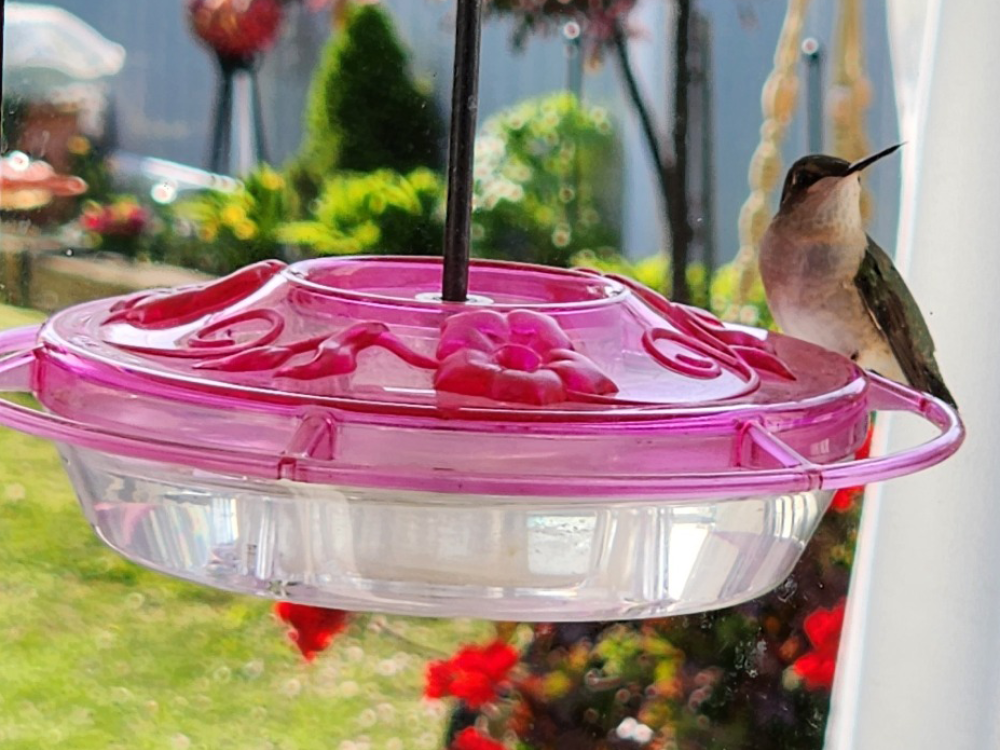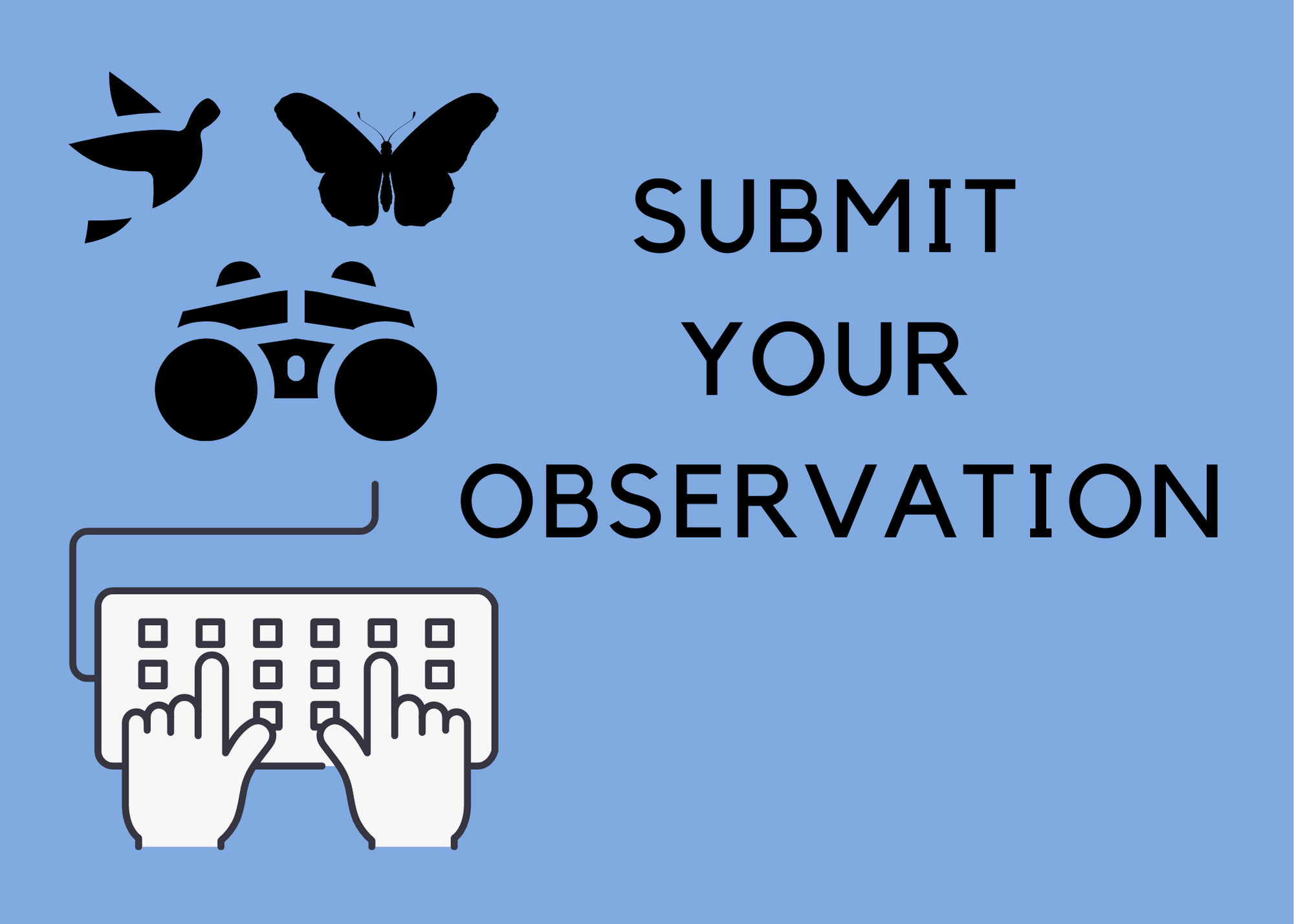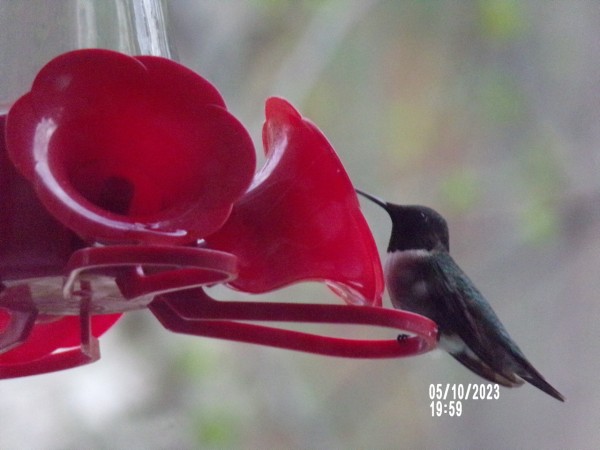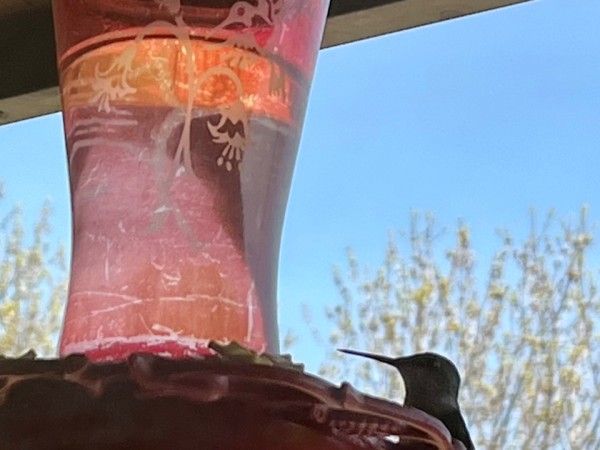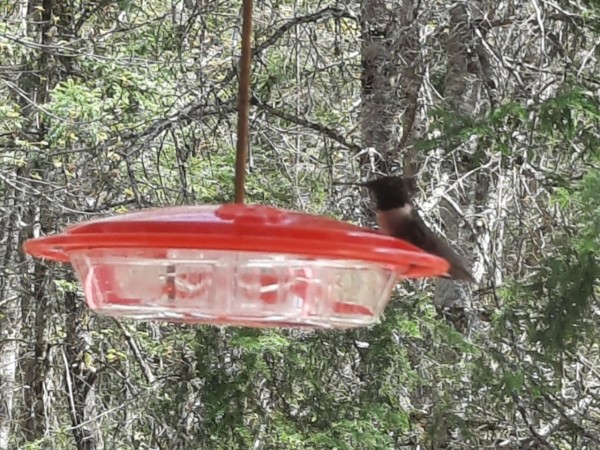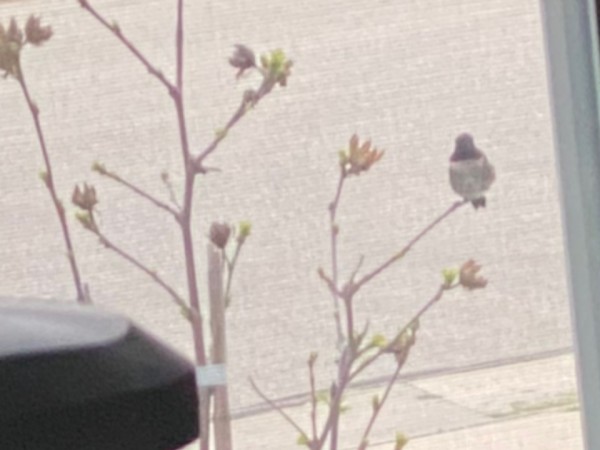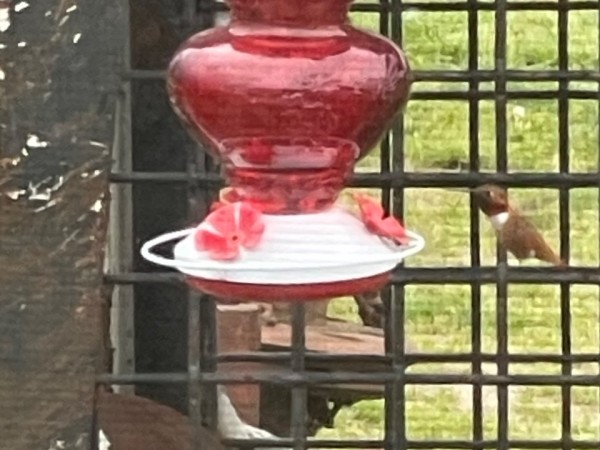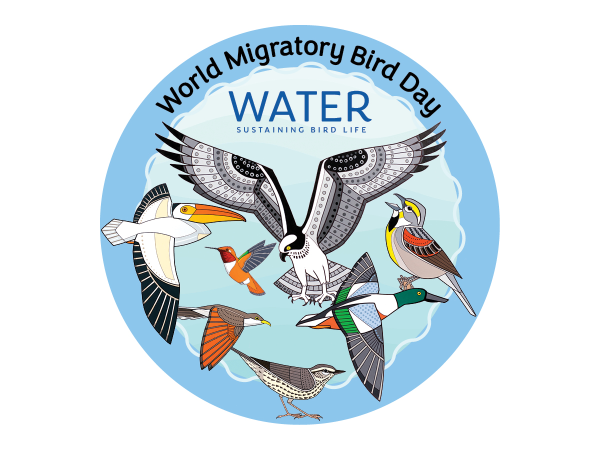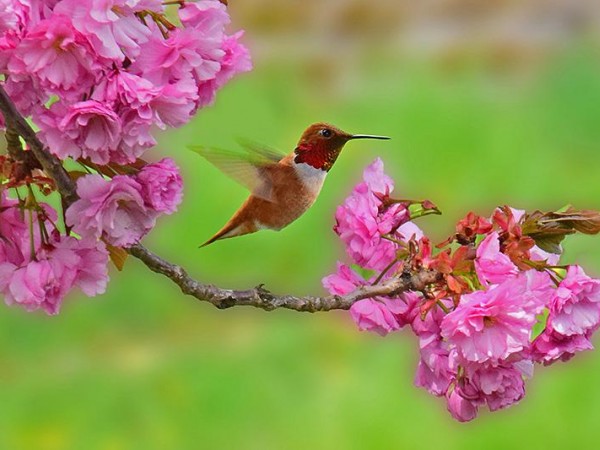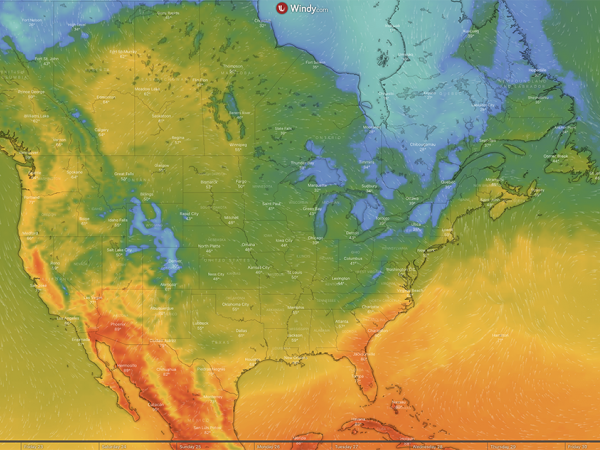The Advance Continues
Ruby-throated Hummingbird
From Saskatchewan to Prince Edward Island, the leading edge of Ruby-throated Hummingbird migration is moving into Canada. How does this year’s pace of migration compare to previous years? Explore our maps and see if you notice any trends.
Donna in Indian River, MI: *1st of the Season* Male came at 627pm to sugar water feeder. Was skittish after a quick drink, flew off. He returned a few more times, the photo is from one of those later visits. We have 3 feeders hanging in different areas but he returned to the same one. We think he might be a "return" Hummingbird, he flew right into our yard bee-lining for the window feeder. There's been a sugar water feeder hung there for 22 years starting at May 1st. My Husband was able to get a clear photo after several attempts." (05/10/2023)
Karen in Loretto, MN: "Put up 2 feeders a few days ago. Saw a female ruby-throated hummingbird stop by at about 7AM today. This particular feeder has always been their favorite, protected under the soffit on our back deck. She’s come back several times already. Getting the rest of my feeders cleaned and prepped so I can put them out today." (05/10/2023)
Louise in Haliburton, ON: "I just had my 1st hummingbird arrive! A male. Perfect timing, since I just hung my feeders this morning. He came 3 times in less than 5 mins!" (05/11/2023)
Mary in Menasha, WI: "Most years our first hummer shows up on the 8th like clockwork. This year was 3 days later. I was somewhat worried. I looked back in my records and had my first sitings on the 11th before. I was so happy to see this little fellow show up, late evening at 7:45 pm. Love our hummers. Saw our first female the next morning at 8:45 am. No better jewel in my garden than those of the hummer." (05/11/2023)
Rufous Hummingbird
Some Rufous Hummingbirds are arriving near the northern limit of their breeding range in Southcentral Alaska, while others are still migrating through the interior U.S. and Canada.
Nancy in Canby, OR: "Saw two hummingbirds. One is the male Rufous. The other was a female of unknown species. Came immediately to the feeder. Gone the next day. Have not seen sense." (05/02/2023)
Kate in Sheridan Lake, BC: "Very territorial male - even chickadees aren't welcome when he's around. Just put the feeders out 3 days previous to seeing him, so he may have been around before the 2nd of May." (05/02/2023)
Nancy in Calgary, AB: "male Rufous Hummingbird in the garden. Very loud and beautifully colored." (05/06/2023)
Other Species
Other species tracked by Journey North also tracks Allen’s, Anna’s, Black-chinned, Calliope, Broad-tailed, and Costa’s Hummingbirds. What other species are you noticing? Please report to Journey North!
Michelle in Kamloops, BC: "Feeder placed approximately 2 weeks ago. Male Calliope visited several times for the first time today. Hopefully he'll be back." (05/10/2023)
Celebrate World Migratory Bird Day on Saturday, May 13
World Migratory Bird Day, a global campaign that aims to raise awareness of migratory birds and the need for international cooperation to conserve them, is this Saturday, May 13. The theme of this year’s celebration is “Water: Sustaining Bird Life.”
The vast majority of migratory birds rely on aquatic ecosystems during their life cycles for feeding, drinking, or nesting, and also as places to rest and refuel during their long journeys. Yet factors such as increasing human demand for water, climate change, and pollution are threatening these aquatic ecosystems and the birds that rely on them.
Journey North is proud to join with you, our citizen scientists, and many others who believe strongly that migratory birds connect us with their unique songs and flights, and remind us of the importance of working together, across borders, to protect them.
Join the campaign by listening to – and watching birds – wherever you find yourself this weekend. And report your bird observations to Journey North as we work together to conserve and protect these species and the water and habitats upon which they rely.
Read more in the World Migratory Bird Day 2023 News Release»

